IMDEA Networks

Archives: Events
Energy Efficient Ethernet (IEEE 802.3az): Performance Evaluation
Energy consumption in Computer Networks is an issue that is gaining increasing attention. In this talk we will review the issue of energy consumption in Computer Networks to then focus on Ethernet where a new standard is being developed to improve energy efficiency. We will discuss some of the alternatives that were considered during the Energy Efficient Ethernet standardization process and describe the solution adopted in the standard. Then we will present some results of an initial performance evaluation of the standard that shows the potential savings for different scenarios. We will conclude the talk by outlining the implications that Energy Efficient Ethernet will have on different aspects of the LANs.
Read more arrow_right_altComputing: A small step from Classical to Quantum
The Theory of Computing is almost a hundred year old now. Its roots can actually be traced to the Entscheidungsproblem posed by David Hilbert in 1928. Another concrete theory in Physics called the Quantum Mechanics had its inceptions almost two hundred years ago (with Thomas Young's Double Slit Experiment in 1803) but actually started in the late 19th century. Today, Quantum Mechanics is proven to be the most successful theory of Physics. So the natural question to ask was that while the statement of Church-Turing Thesis is seen to be a statement of physics (laws of nature), then it should be compatible with the theory of Quantum Mechanics!
Read more arrow_right_altCloud elasticity at a flat fee
Existing cloud computing platforms offer virtually unlimited compute resources (virtual machines, bandwidth, storage, etc.) that can be used on demand. Such on-demand model offers significant elasticity to the customers in terms when and where they use the resources. The existing pricing model, however, is pay-as-you-go which in turn can lead to unpredictable costs to the cloud customers. This talk will discuss two adaptive approaches for resource control under a fixed budget: Distributed Rate Limiting (DRL) and Temporal Rate Limiting (TRL). DRL is a fully decentralized mechanism for resource control over a distributed cloud service, that splits the available budget among the participating nodes subject to the load each node experiences. TRL in contrast, splits the budget over a time period, to optimize the performance of the customer with demand pattern that varies in time.
Read more arrow_right_altThe GeoNet Final Workshop
The GeoNet consortium invites you to attend its final workshop as a unique opportunity to learn more about IPv6 geonetworking and the link between IPv6 geonetworking and the related ITS development in CAR 2 CAR Communication Consortium, CVIS implementation and ETSI TC ITS standardization. During the workshop you will get information through communications and posters and also see the system working in real cars. Please find the program in attachment with practical details (exact place, registration procedure...).
Read more arrow_right_altSecurity and non-cooperative behavior in wireless networks
According to most technology pundits, progress in wireless and sensor networks will lead us into a world of ubiquitous computing, in which myriads of tiny, untethered sensors and actuators will communicate with each other. Information technology will thus deliver its most encompassing and pervasive accomplishment to mankind, promptly taking care of the needs and wishes of everyone.
Read more arrow_right_altAnalysis and Experimental study of operational 802.11-based Wireless Mesh Networks
The performance of IP flows in Wireless Mesh Networks is unfairly biased by the unplanned compounding behavior of MAC and transport protocols. This compounding protocol behavior can undesirably result in complete starvation of some flows and in consistent capacity reductions originated by, e.g., limited volumes of control traffic.
Read more arrow_right_altThe pain of doing research with real (wireless) devices
A lot of attention has been given to multihop wireless networks lately. This attention has motivated an increase in the number of 802.11-based deployments, both indoor and outdoor, used to perform measurement studies to analyze WLAN performance by means of wireless sniffers that passively capture transmitted frames. In this talk talk we will introduce some of the major issues that systems researchers have to address when performing such measurements: i) on one hand, the testbed itself requires a significant amount of resources during both its deployment and its maintenance, and they require a "calibration" phase before running the experiments given that as off-the-shelf devices have recently been shown to deviate from the expected behavior--in this talk we summarize a few lessons learned from the deployment of a 28-node wireless testbed; ii) on the other hand, little attention has been given to the fidelity of an individual device, i.e., the ability of a given sniffer to capture all frames that could have been captured by a more faithful device. We assess this fidelity by running controlled experiments, and show that it varies significantly across sniffers, both quantitatively and qualitatively.
Read more arrow_right_altInformation and Communications Technologies and the challenge of energy efficiency
The steadily raising energy costs and the increasing number of evidences of climate changes induced by high levels of CO2 in the atmosphere have brought the issue of a sustainable use of energy to the attention of governments and of people all over the world. The need for a more responsible use of energy has emerged in all sectors, together with the awareness that a decrease in carbon emissions is vital to ensuring a future to mankind. The ICT sector, which has brought deep transformations and a rapid increase in productivity in many domains in the last decades, is at the center of this transformation. In all fields of communications, researchers have started to investigate approaches to reduce energy consumption, both by designing new devices, and by exploring new network architectures. In particula r, dynamic network planning, which implies decreasing the power consumption of those network resources which are underutilized, is seen as one of the most promising techniques to improve the energy efficiency of networks.
Read more arrow_right_altCharacterizing the Behavior of Content Publishers in BitTorrent
Due to the increasing popularity of P2P systems and their contribution to overall Internet traffic, it is essential to understand how content, which is the main attraction in P2P systems, is fed. The main goal of this talk is to identify and characterize those communities of users that are primarily responsible for publishing/feeding content in BitTorrent. For this purpose we have performed two large scale measurement studies that collectively identify the feeders of more than 30k torrents. Out of these measurements we conclude that a significant part of the BitTorrent’s content (40%) is fed by two different groups: (i) users concentrated min a few IP addresses of Hosting Service Providers. In particular, there is a single Hosting Provider in this community that alone is responsible of feeding 25% of the content published in the current major BitTorrent Portal. (ii) A large number of regular BitTorrent users spread across the networks of big ISPs. In addition, we characterize how the feeders of both communities behave, finding out that the typical Hosting Providers feeder (i) publishes a larger number of torrents that become more popular and (ii) seeds longer its torrents than regular users acting as feeders. Our findings suggest that a small group of users in Hosting Providers effectively leverage BitTorrent to publish content. Therefore, their presence is essential for the livelihood of BitTorrent.
Read more arrow_right_altBinary Program Analysis and Model Extraction for Security Applications
In this talk I present a platform to extract models of security-relevant functionality from program binaries, enabling multiple security applications such as active botnet infiltration, finding deviations between implementations of the same functionality, vulnerability signature generation, and finding content-sniffing cross-site scripting (XSS) attacks.
In this talk, I present two applications: active botnet infiltration and finding content-sniffing XSS attacks.


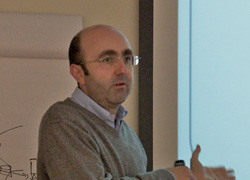
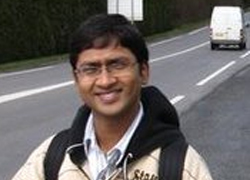

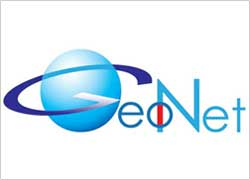


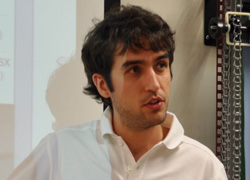
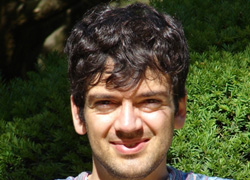
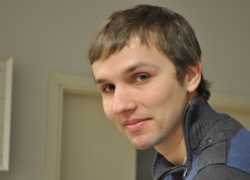

Recent Comments